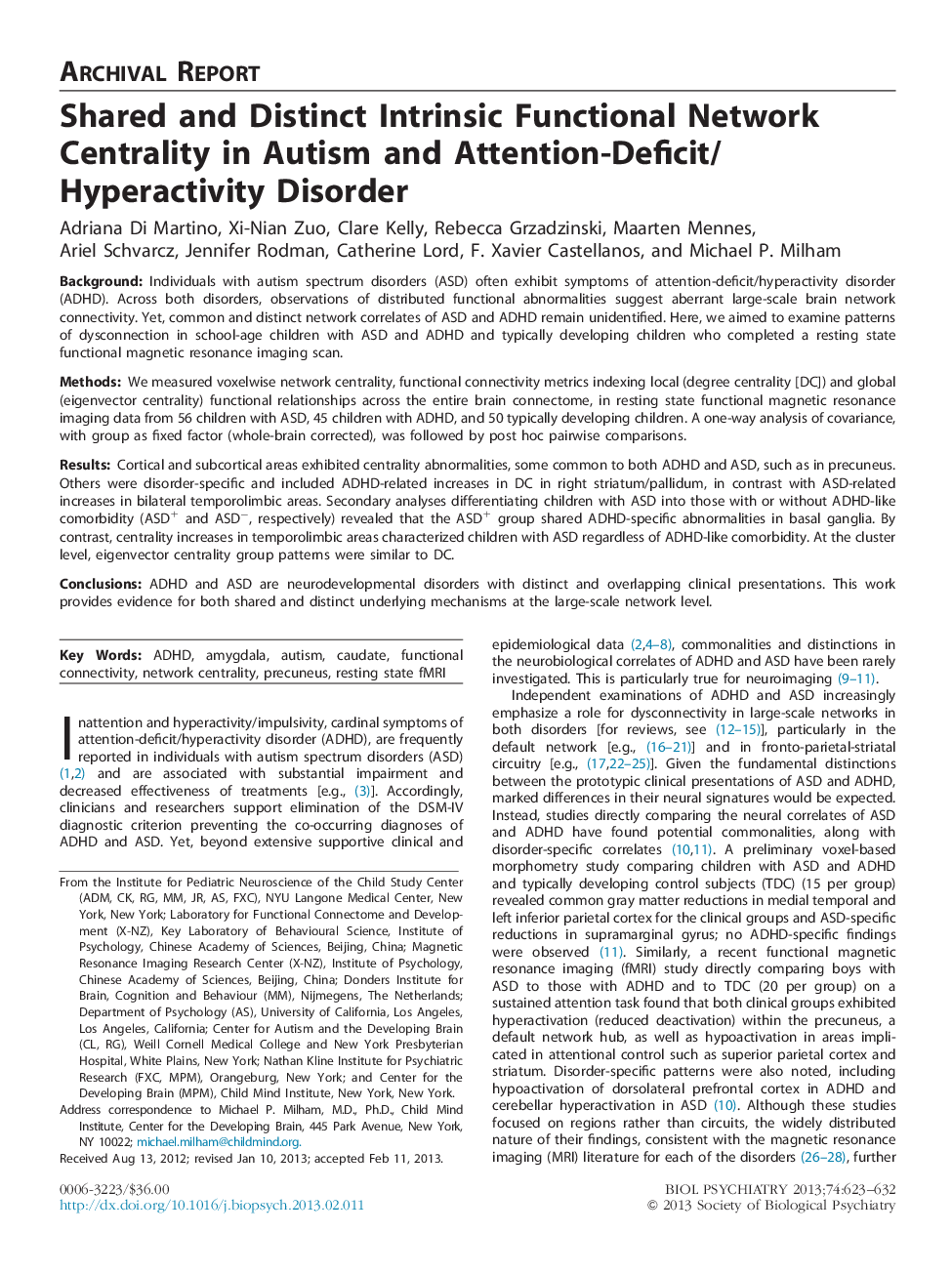| کد مقاله | کد نشریه | سال انتشار | مقاله انگلیسی | نسخه تمام متن |
|---|---|---|---|---|
| 6227574 | 1276458 | 2013 | 10 صفحه PDF | دانلود رایگان |
BackgroundIndividuals with autism spectrum disorders (ASD) often exhibit symptoms of attention-deficit/hyperactivity disorder (ADHD). Across both disorders, observations of distributed functional abnormalities suggest aberrant large-scale brain network connectivity. Yet, common and distinct network correlates of ASD and ADHD remain unidentified. Here, we aimed to examine patterns of dysconnection in school-age children with ASD and ADHD and typically developing children who completed a resting state functional magnetic resonance imaging scan.MethodsWe measured voxelwise network centrality, functional connectivity metrics indexing local (degree centrality [DC]) and global (eigenvector centrality) functional relationships across the entire brain connectome, in resting state functional magnetic resonance imaging data from 56 children with ASD, 45 children with ADHD, and 50 typically developing children. A one-way analysis of covariance, with group as fixed factor (whole-brain corrected), was followed by post hoc pairwise comparisons.ResultsCortical and subcortical areas exhibited centrality abnormalities, some common to both ADHD and ASD, such as in precuneus. Others were disorder-specific and included ADHD-related increases in DC in right striatum/pallidum, in contrast with ASD-related increases in bilateral temporolimbic areas. Secondary analyses differentiating children with ASD into those with or without ADHD-like comorbidity (ASD+ and ASDâ, respectively) revealed that the ASD+ group shared ADHD-specific abnormalities in basal ganglia. By contrast, centrality increases in temporolimbic areas characterized children with ASD regardless of ADHD-like comorbidity. At the cluster level, eigenvector centrality group patterns were similar to DC.ConclusionsADHD and ASD are neurodevelopmental disorders with distinct and overlapping clinical presentations. This work provides evidence for both shared and distinct underlying mechanisms at the large-scale network level.
Journal: Biological Psychiatry - Volume 74, Issue 8, 15 October 2013, Pages 623-632
